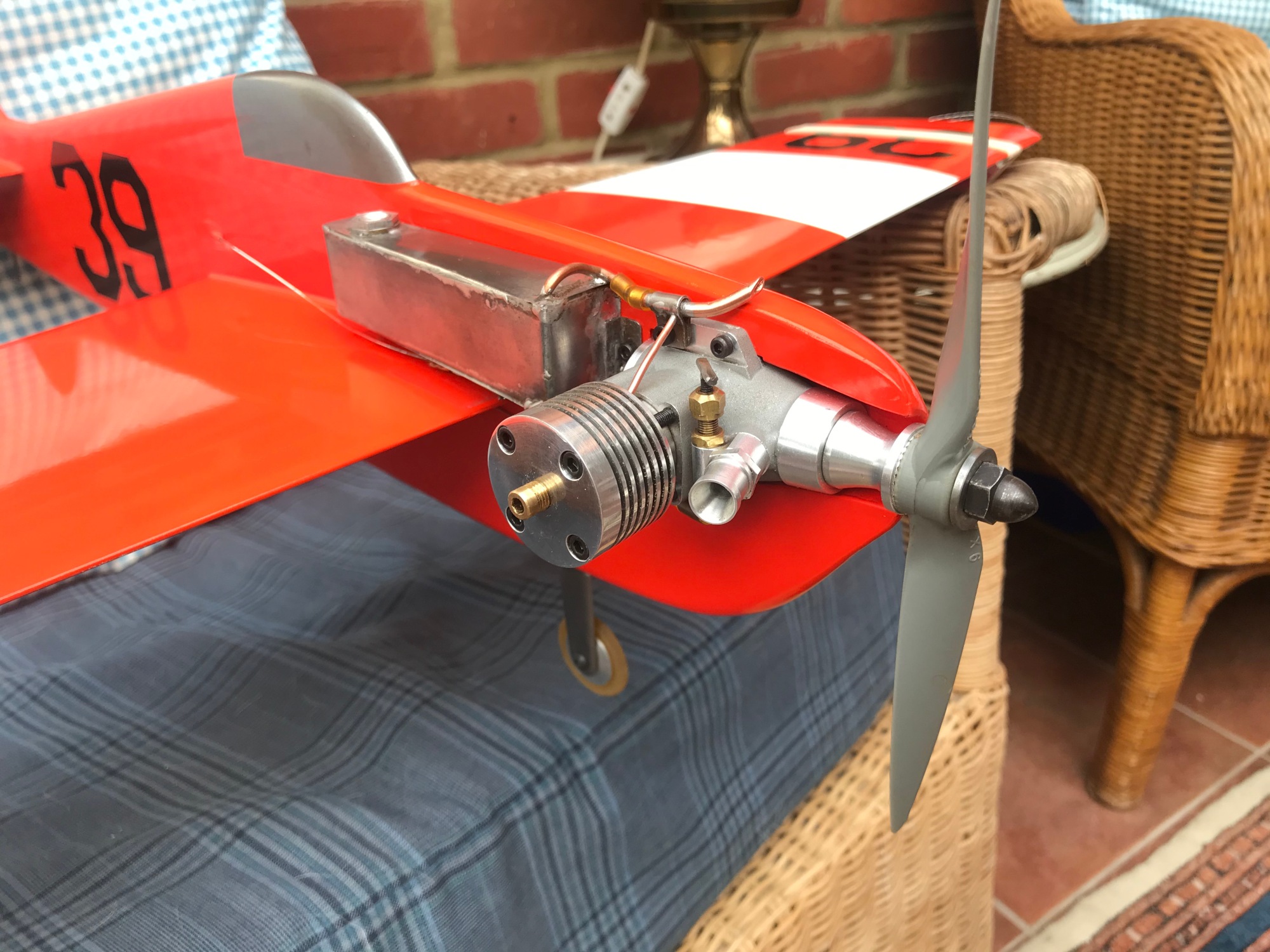At the end of 2019 it became apparent there may not be much racing the following season.. and as we stumbled into 2020 it looked a Goodyear (!) for building. of the many projects on my mind was a BGY model to make the most of Oliver type engines against the all conquering PAW’s
British Goodyear build
I’ve had a new model, for K12, in mind for some time.

Yes, British Goodyear has a problem. In my opinion.
This class has morphed into one of the most specialised and least accessible to newcomers, in terms of being able build a model with race winning pace using over the counter engines. Case in point, the current National Champions team Munro / McAlpine use a Ridley Oliver. A beautiful piece of engineering, these motors were a modified mkIV Oliver for Goodyear racing, with a bigger crankshaft. Running the vintage designs as racing engines will always bring some issues. My first Ridley was great initially but went slower and slower over time. Then the ‘backplate issue’ was spotted and an engine sent for measurement was showed the cylinder to be significantly mis-aligned, the wrong way. The motors quickly gained a reputation for being prone to rapid wear but in the right hands had great potential. Iain McAlpine is clearly a very good engineer as his motors are very competitive.

But considering this is THE beginners class, a massive own goal has been scored.
Engine performance is but one small but important part of the story. To go racing you need good equipment, but 80% of the winning recipe is in the team work and skill of the pilot and pitman. So those that win with the quickest gear would probably do very well with average equipment. They may even still win.
The real issue with aspiring racers though, is that if they see unattainable performances then they will become disillusioned and less likely to persevere.
As I don’t own a model engine factory, and I couldn’t barely tune my old TV let alone a racing engine, so the only avenue open to me is to try and build better models, and improving my standard of flying. I do firmly believe that a well built model can enhance an engines ability to achieve maximum performance and consistency.
So I planned on using my trusty K12/19, available from TechnoHobby West. The model needed to be straight, stiff, clean and light in that order. I wanted to do a full colour finish as I have a growing aversion to single colour fuselage with a plain wood wing. That is just plain lazy.
One of the prettiest of all the older generation Goodyear racers is the Mike Argander Special or Deerfly. Proportionally it is very well suited to scaling down for our purposes, with a nice planform, suitable nose and tail moments and reasonably beefy rear fuselage. Great for not snapping off on fast pitstops. Hopefully.

Construction
A bog standard 8mm wing with box and spruce edging was made. I used a bellcrank from Ed Needham and covered in 40g glass cloth, wet method.
The tail was pressed 55g triaxial carbon onto a quarter grain balsa core. Carbon rows were laid in for LE & TE. This was blinking stiff and a reasonably weight. Shiny too, which is always a bonus.

The fuselage is made predominantly from balsa with beech bearers and some carbon fibre lobbed in for good measure. I think I made an error in wanting to have fully internal controls. I do this on F2CN’s as it’s really easy and the cleaner model, although probably no faster, is easier to clean down! Doing this on a BGY is fairly pointless and far more work than the end result justifies. But sometimes you’ve just got to itch that scratch….


Next time – the project that nearly broke me – F2C


You must be logged in to post a comment.